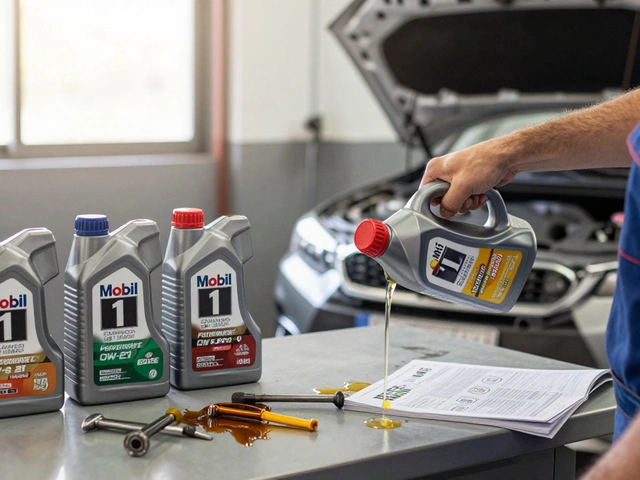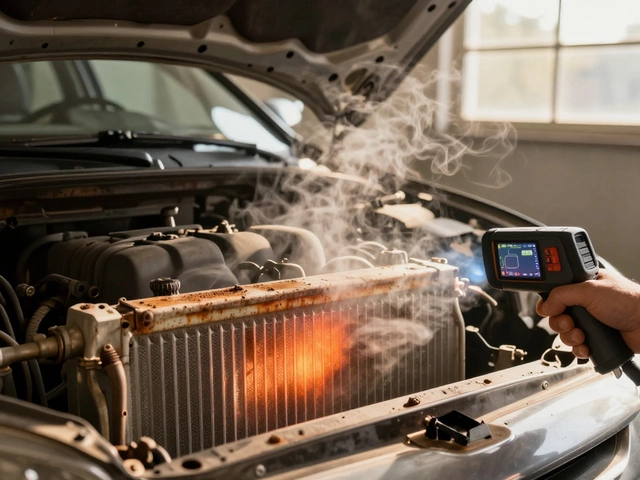Exhaust System Guide: Boost Sound, Power & Stay Legal
Every car has an exhaust that does more than just get rid of fumes. It shapes the engine’s voice, helps the engine breathe, and can even add a few horses under the hood. If you’re wondering whether a new muffler, a 3‑inch pipe, or an active valve will make a real difference, you’re in the right place.
How the Exhaust System Works
The exhaust starts at the exhaust manifold, gathers gases from each cylinder, and pushes them through a series of pipes, a catalytic converter, and finally the muffler. The catalytic converter cleans the gases, while the muffler controls noise. The size and shape of each section affect back‑pressure – too much slows the engine, too little can make it roar louder than the law allows.
Back‑pressure isn’t always bad. A well‑tuned system keeps the engine’s exhaust flow smooth, which can free up a 5‑10% power boost. That’s why many performance builds use a cat‑back or axle‑back setup: they replace the muffler and pipe after the catalytic converter without tampering with emissions equipment.
Popular Exhaust Upgrades and What They Actually Do
Make Your Exhaust Louder Legally – Our 2025 guide shows how to add volume without a ticket. Active valve exhausts let you switch between quiet city mode and louder track mode with a button or ECU command. Most states limit noise to around 80‑85 dB at 50 ft, so testing at home with a decibel meter is a smart first step.
3‑Inch Exhaust Pipes – Going bigger can reduce back‑pressure, but the gain depends on engine size and supporting mods. A 3‑inch pipe often adds 5‑10 hp on a V8, but on a small four‑cylinder the benefit may be negligible. Pair the pipe with a free‑flowing muffler for the best result.
Best Exhausts for Horsepower – Performance exhausts use straight‑through designs, mandrel‑bent tubes, and high‑flow mufflers. Brands that specialize in race‑grade parts usually test for flow rate and sound level, so you know you’re getting measurable gains.
Muffler Delete – Removing the muffler gives the biggest sound jump, but it can raise back‑pressure and may trigger your car’s OBD sensors. It’s also illegal in many places because of noise limits. If you love the tone, a high‑flow muffler is a safer, street‑legal alternative.
All these upgrades share a common theme: they work best when the rest of the exhaust is compatible. Mixing a cheap pipe with a premium muffler can create turbulence that hurts performance.
Maintenance matters too. A cracked pipe or rusted muffler can leak exhaust gases into the cabin, which is a health hazard. Inspect the system annually for holes, loose clamps, and corrosion, especially if you live near the coast where salt accelerates rust.
When you decide on a new exhaust, ask yourself three questions: Do I want more sound, more power, or both? Am I okay with the cost of supporting parts like new gaskets or clamps? Can I stay within my local noise regulations?
If you answered yes to sound and power, the cat‑back route with an active valve is a solid pick. For a modest budget, a 2.5‑inch mandrel‑bent pipe and a free‑flowing muffler can give a pleasant tone and a slight power bump.
Ready to start? Grab the titles that match your goal from our tag page – “How to Make Your Exhaust Louder Legally”, “Will a 3 Inch Exhaust Improve Your Car's Performance?”, “Best Exhausts for More Horsepower”, and “Will Muffler Delete Hurt Engine?” – and dive into the details. Each article breaks down costs, installation steps, and legal limits so you can make an informed choice.
Bottom line: a well‑chosen exhaust upgrade can make your car sound like a beast, add a little bite to the acceleration, and stay street‑legal. Just match the parts, check local dB limits, and keep everything squeaky clean. Happy modding!

Choosing the Best Exhaust System: A Practical Guide
Learn how to pick the ideal exhaust system by understanding material, flow, fit, sound, emissions, and budget. A step-by-step guide with checklists, comparison tables, and FAQs.
CONTINUE READING
How to Choose an Exhaust System: A Simple Guide for Every Driver
Looking for a new exhaust system but feeling lost? This article makes it simple by explaining everything you need to know, from basic options to real-use tips. You'll find out what actually changes when you swap exhaust parts, which materials and designs matter, and where you might waste your money. Get the facts without the fluff and make confident choices for your car or truck.
CONTINUE READING
How Much Does It Cost to Fit an Exhaust System?
Thinking about fitting a new exhaust system but don't know the cost? This article breaks down the expenses involved, from the price of parts to labor charges, providing you with a clear picture of what to expect. Find out important tips on choosing the right exhaust and how to get the best value for your money. Understanding these factors can help you make an informed decision and maybe even save you some cash.
CONTINUE READING
Do Mufflers Actually Boost Gas Mileage?
Mufflers play a crucial role in reducing noise from a vehicle's exhaust system, but their influence on gas mileage is a topic of discussion. This article explores whether a muffler can enhance fuel efficiency and the factors that come into play, such as design and vehicle compatibility. Providing practical insights and tips, it helps readers understand the impact of mufflers on fuel consumption. It also delves into how the right choice of components can potentially optimize a vehicle's performance.
CONTINUE READING












